Article courtesy of Steve B
Update on Swytchbike conversion kits by Pete S on 17 March 2022
Electric Bikes
In this article, any makes or models of E-bikes referred to, are done so merely for illustrations and are not recommendations.
What is an E-bike
The technical term for an E-bike is a Pedelec. This means an electrically assisted pedal cycle. You pedal and the bike helps you. They are not low powered electric motorbikes, the rider has to put at least some effort in to make them go.
Why get an E-bike?
Research has shown that, in this country, the main reason why people buy electric bikes is for exercise. E-bikes help their riders manage the riding experience. It might sound obvious then, but it is worth thinking about why you might need or want the electric assistance, before buying any E-bike – particularly as E-bikes are an expensive item, even the cheaper ones.
During the Corona Virus pandemic sales of electric bikes, according to Halfords, have tripled – go into most bike shops and the E-bikes are the first bikes that you see but E-Bikes are all a little confusing.
What types of E-bike are there?
Like all cycles, the cost of E-bikes varies with the quality of the frame materials and components fitted to the bike. Generally, lower-cost means lower quality. Low quality often entails low end (i.e. poorer quality) mechanicals, frame material (i.e. heavy), and components. Usually, these mean you will get a poorer ride i.e. harder work, harder to operate brakes for example, and probably a shorter life span generally. With E-bikes this also may mean a lower capacity battery and or lower power motor, but that is not an absolute rule.
Leisure/Trekking Bikes
Flat or swept-back handlebars, Diamond or step-through frame – these usually have a more upright sitting position and possibly include mudguards, pannier rack, front suspension and lights. They give an undoubtedly more comfortable ride than their “racing” styled counterparts. But, they are also more likely to be the heavyweights of E-bikes and you will need to consider how you would transport it!! These are the most popular E-Bike in our cycling club.
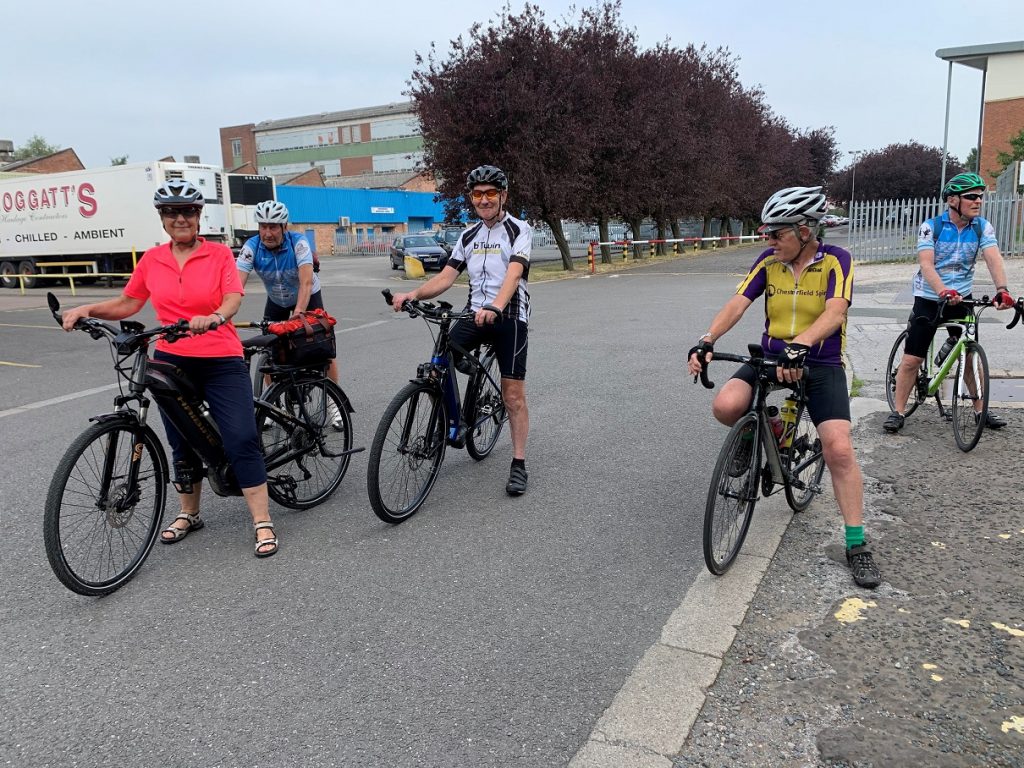
Road bikes/Gravel bikes
At a glance, it is hard to see with some models that these are E-bikes! They do have the “Racing Bike” look. If you decide this is the type of bike for you then it is very important to make sure that the bike fits your comfort requirements. The riding position is very different to a Trekking bike. These bikes tend not to come with mudguards and some will not allow full mudguards to be fitted but there are good clip-on mudguards on the market. These are often the lightest weight type of E-bike. Gravel bikes look like road bikes but have fatter tyres and will handle trails well.
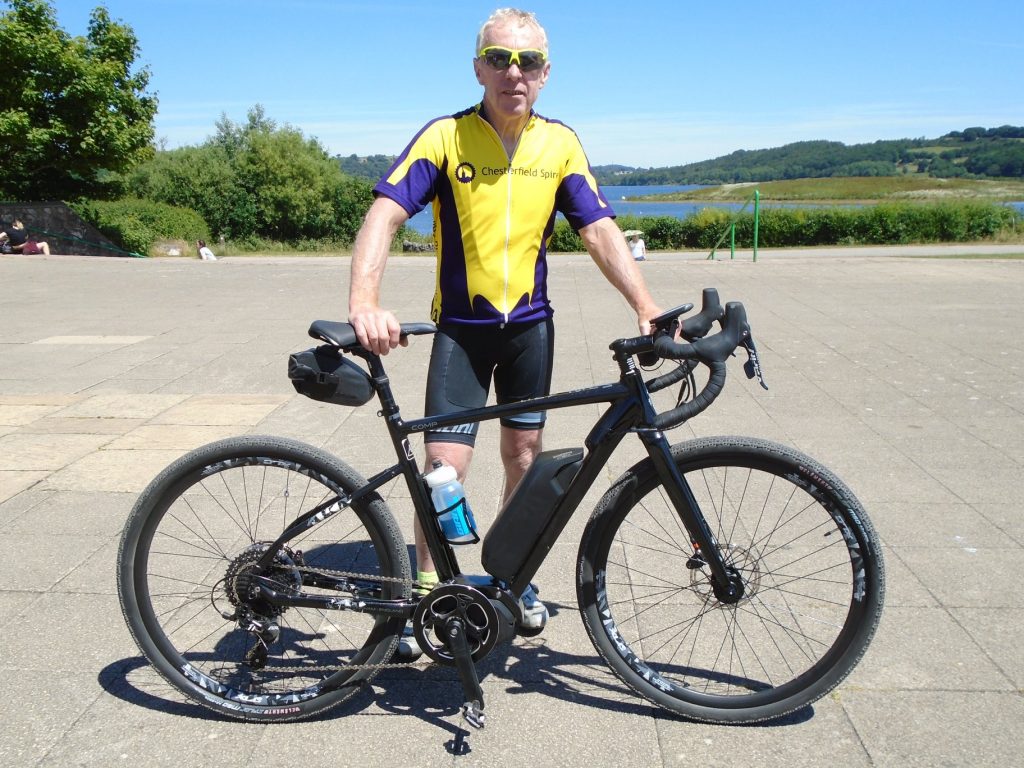
Hybrids
These have flat handlebars and have larger, thinner wheels than a regular mountain bike, being partway between a mountain bike and road bike (i.e. racing style). Some have front suspension and generally can be fitted with mudguards and a pannier rack. These are an excellent general purpose bike and are usually much lighter than a Trekking bike.
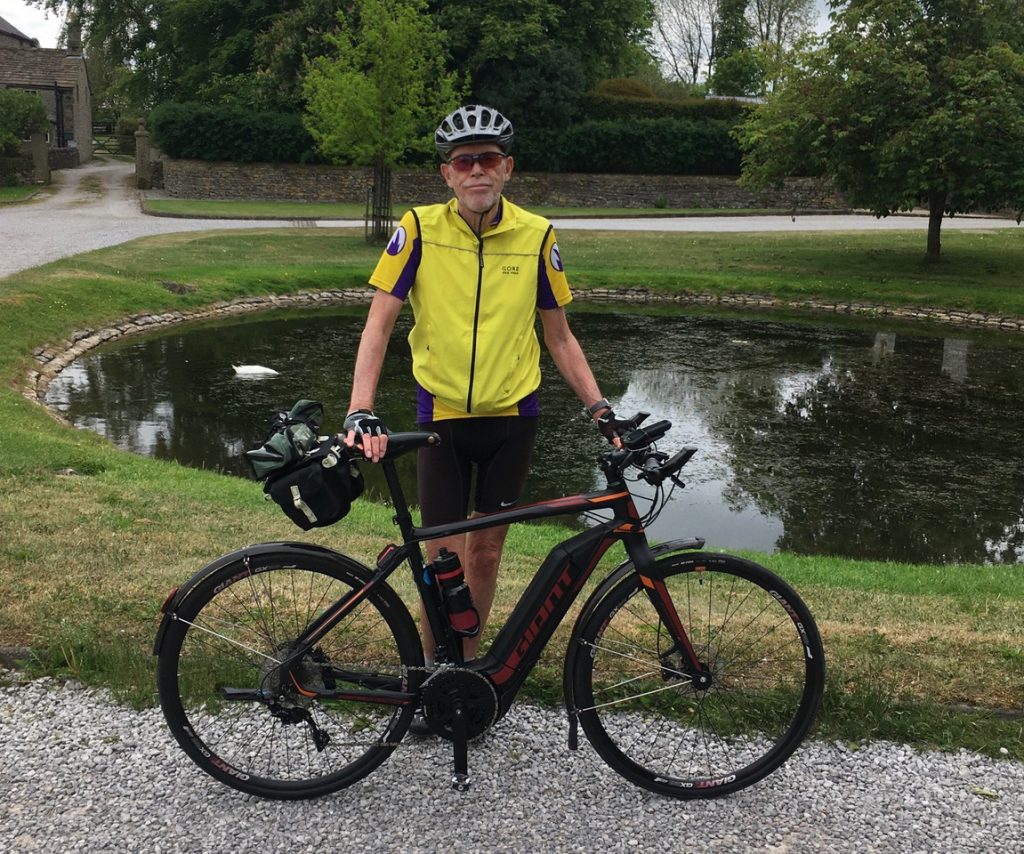
Conversion Kits
There is a wide range of E-bikes on the market, including conversion kits, which convert a regular cycle into an E-bike. Conversion kits are a good low-cost way, (around £500 for the kit), of getting an E-bike if you already own a suitable bike to convert. Converting an ordinary bike to an E-bike has one advantage and that is it can often offer an E-bike with a wider range of gears than many main manufacturers’ models. However, when considering a conversion kit, it is advisable to ensure the bike you are thinking of converting is suitably strong enough to cope with the extra weight and power of an electric motor and battery. This is especially so with the bike’s front forks if a front hub drive is being considered. Sturdy steel forks are recommended, carbon forks are not. Rear hub and mid drives are available as conversions. The latter driving at the bottom bracket is the hardest to fit. Conversion does take a bit of skill and knowledge if you do it yourself but you can get the supplier to fit the conversion at extra cost.
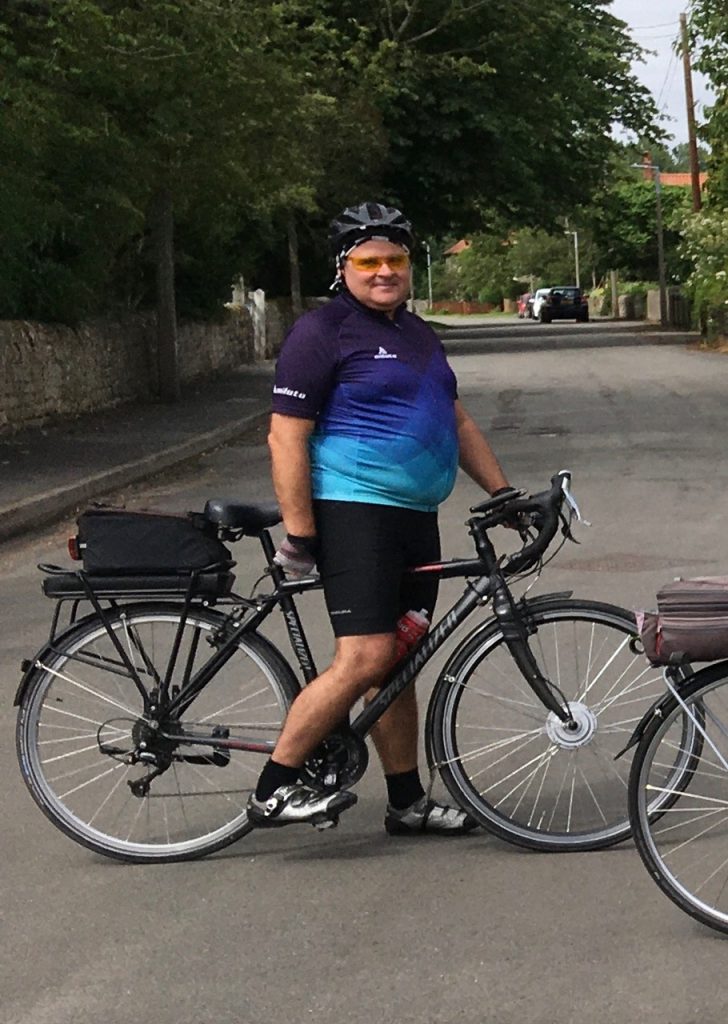
Swytchbike Hub Conversion Kits (written by Pete S March 2022)
” At the present time they produce 2 kits, although there is another more versatile and lighter version in the pipeline. The kits are the ECO with a claimed range of 30k and the PRO with a claimed range of 50k. Mine is the latter. From my own experience, I would not dispute the company’s claim. Nor, after riding, in relative comfort up Sydnop Hill, would I dispute the claim that the motor produces up to 40Nm of torque and would be able to assist “an average adult” up a 30% incline with little difficulty.
A visit to the website explains their product better than I can, but, if you can tolerate their marketing flim flam and you can cope with their ordering systems, they do sell a well-made product which ticks the boxes of those who prefer a bespoke electric assist kit to a purpose built bike. The full price of the PRO kit costs in excess of £1100 (as of March 2022), if you want it immediately, but, if, as I did, you are prepared to wait 12 weeks, it would cost in region of £650 (as of March 2022).
What’s in the box:
- A hub motor front wheel, the size of which is the customer’s choice
- Power pack
- Universal pedal sensor
The whole kit adds 3kg to the weight of your bike and is relatively easy to fit, the only issues I encountered were aligning the magnetic disc with the sensor and tidying up the cabling.”

Small wheeled folders
There are various styles and qualities with some described as “shoppers”. If it is a cheap folding shopper, just bear in mind the information about quality and battery power etc. and take your pick. If it is a quality folder that folds to a small package there are several on the market, so you’ll need to consider whether it’s the fold or the ride quality that is important to you. Whilst a Brompton might offer the smallest folded package, bikes like the Birdie or less expensive Dahon, probably offer a better ride, but don’t fold as small.

Mountain bikes
A bike with flat handlebars designed to be ridden off-road. There is a huge range of styles to suit all types of off-road terrain, ranging from those with no suspension to those that come with front suspension only or full suspension. There are also various wheel sizes from 26 inch to 650B to 29er (i.e. 700c with large tyres). You will probably see E-Mountain bikes in a bike shop before other bikes – there is a huge market for them. They tend to suit a certain use unlike the other bikes described above.
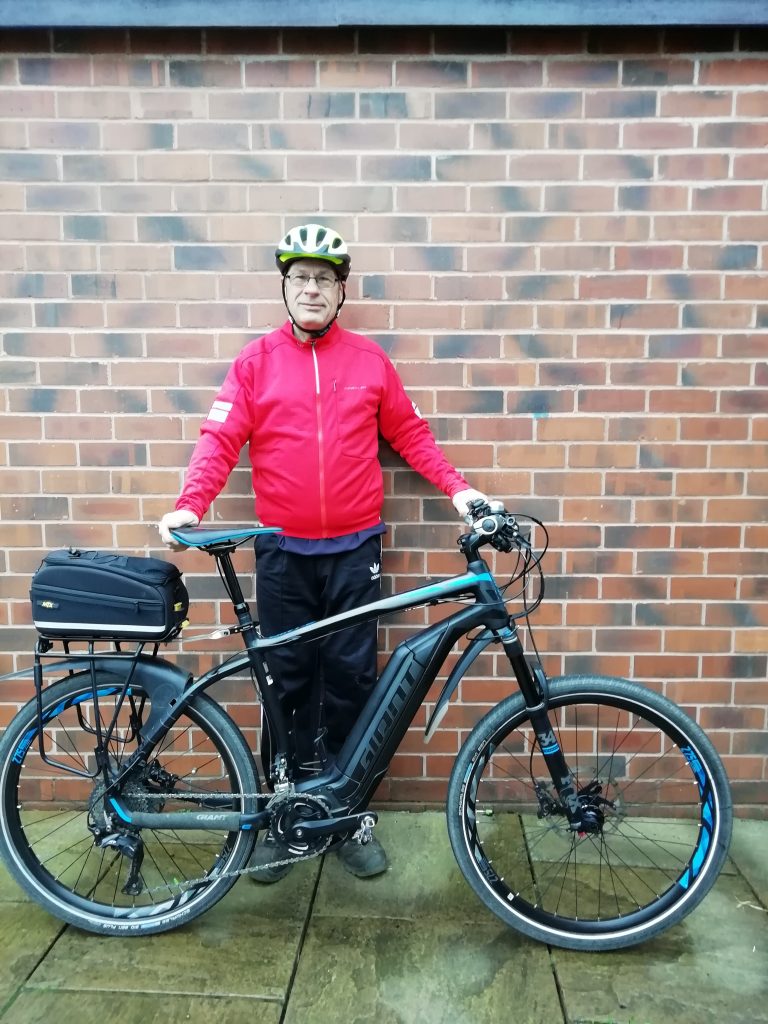
Frame materials on all the above are usually aluminium alloy with carbon forks. High end i.e. expensive bikes usually have full carbon frames and other components. There are of course also E-bike tandems and cargo bikes but these are more specialised and not dealt with here.
All the above E-bikes are likely to have some level of gearing to help you manage pedaling up steep hills and all the terrain in between. Gears are advised in an area like Derbyshire because they will help you manage the terrain and battery consumption. You may have seen TV adverts for E-bikes such as the G-tech E-bike (others are available) which have only a single speed. These could be fine if you only use them in flat areas.
Now the Technical but Important Stuff
As mentioned above, the better the frame materials and components on any bike the more expensive the bike will be. With E-bikes, there are additional electronic components that will also increase the cost of any particular machine.
The greater the capacity of an E-bike’s battery and the power of the motor is likely to not only increase the cost of a particular bike, but it is also likely to increase the weight of the machine, which may be critical in the decision about which bike would be most suitable for you. That said, as the technology is developing rapidly so the motors and batteries are getting smaller and lighter, but the above case still applies regarding size and weight.
Batteries are rated usually in “watts”. So a 250-watt battery is a relatively small capacity one whilst a 500-watt battery (approx 14 Amp-hour), is a relatively large capacity. Some models have even larger capacity 600-watt batteries today.
Needless to say, generally, the larger the battery capacity the further the bike will go between charges. However, this distance or “range” will vary greatly depending on several factors such as the power of the motor, the weight of the bike, the fitness of the rider and the terrain being ridden etc. More on this later.
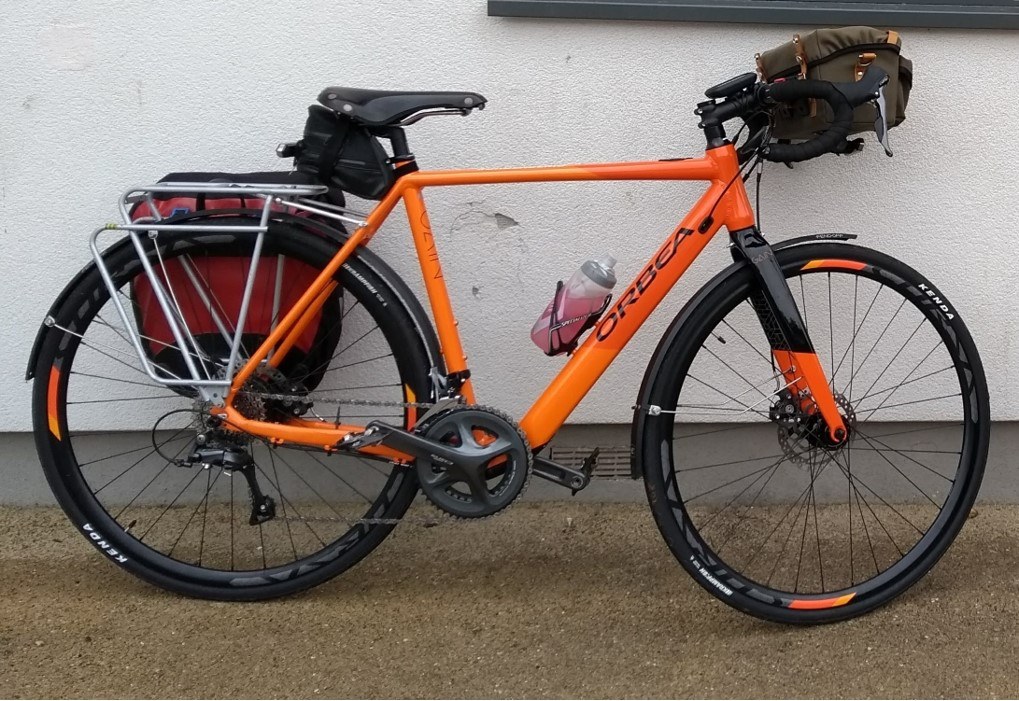
Motor Drives
If you look closely at a range of E-bikes you will notice that on most commercial bikes the motor is either mounted in the rear hub to drive the back wheel or in the frame at the bottom bracket, where it will drive the pedals. Bikes like the Brompton folder use the front hub as the location of its motor. Generally speaking, a hub drive motor is likely to be of a lower power range than a frame fitted bottom bracket motor (Mid-Drive).
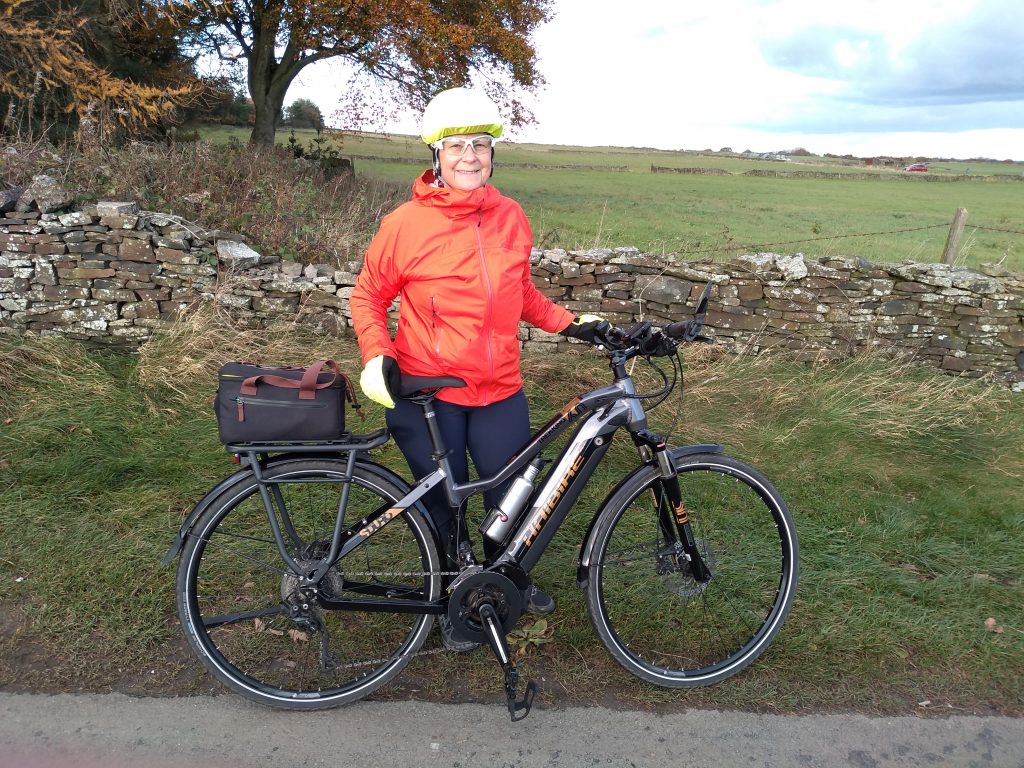
All E-bike motors (as distinct from batteries), should be rated at no more than 250 watts. Anything more powerful than this is not legal as a pedelec. A 350 watt motor E-bike, for example, is rated as an electric moped and as such comes under motorcycle regulations, requiring the bike to be registered, have insurance, number plate and the rider to have a licence to ride it and use a motorcycle helmet.
So if all E-bikes have 250 watt motors why are we talking about more and less powerful E-Bikes. Each E-bike motor also has “Torque” rating which is measured in Newton Metres (Nm). This is a measure of the amount of turning power the motor can output. Hence the most powerful Nm rated motors are rated at 80 Nm. Hub motors tend to have a lower Nm rating than bottom bracket motors. A useful link to the types of motors (EU regs)

Fairly recently a combined battery and motor system has been on the market and on makes as disparate as Boardman and Cube – see photos above. This system by a company called Fazua allows the owner to remove the battery and motor as a unit, leaving the bike rideable as a slightly heavier un-powered cycle. A useful link to this type of Fazua system.
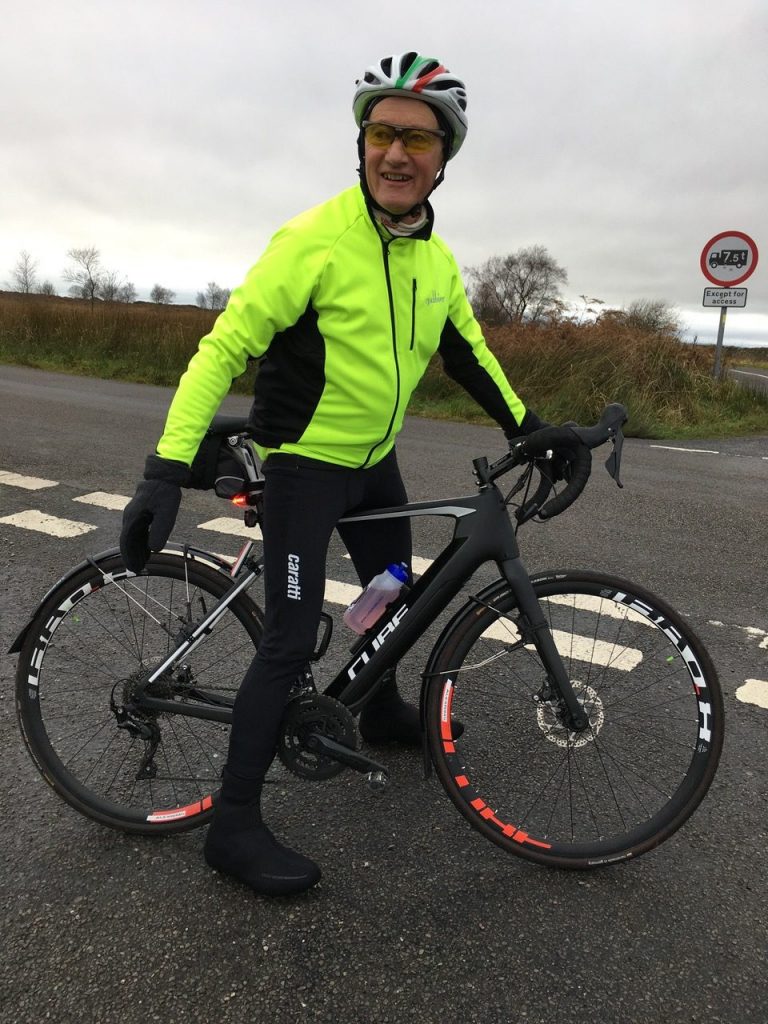
Range
Sooner or later most people thinking about buying an E-bike will need to consider how far the bike they are looking at will go on one charge of the battery and whether the model they are looking at will go far enough for them.
As hinted above, determining how far any particular E-bike will take you is not as easy as just looking at the battery capacity and motor power. Other factors will also need to be taken into account such as how fit and/or strong the rider is and how much power output they will need from the E-bike to complete a particular ride. This also is affected by the terrain that the ride will be covering, i.e. is it flat or hilly. Even a less strong rider will, some of the time, find they do not need power assist to make the bike go, i.e. along a flat road or downhill.
Most E-bikes have some form of control panel to adjust the amount of battery power the rider wishes to use at any particular time. It is not a case of just power on or off and neither do pedelecs use a throttle twist grip, like a motorcycle. However, depending on the sophistication of the machine, this control panel will have between two and five power levels available to the rider.
Clearly the higher the level of the power being used and the length of time a high level of power is used will affect how long the battery will last and so how far the bike will go under power. But for example, an averagely fit rider in Derbyshire might expect to achieve a range of 70+ miles from a 500-watt battery, but somewhat less than this if a high power level is selected for the duration of the ride.
In summary, there are lots of manufacturers making all sorts of E-bikes. The above are offered just as examples for illustration purposes, but they show the variation in E-bike models which should enable most people to find something which will suit their needs. Whatever you decide and however fit or otherwise you are, an electrically assisted bike is likely to transform your cycling experience and perhaps keep you on the road much longer than you might have expected.
Before purchasing an E-bike you need to make sure there is a local bike store where trained mechanics can service and repair your chosen bike. You certainly do not want to be sending it back to a supplier! Try a demonstration model out before you make a decision. Perhaps hire one for a good ride on the Monsal Trail. Make sure the bike has a good long warranty on the frame and components like the motor, battery and other electronics.
So good luck and happy cycling!